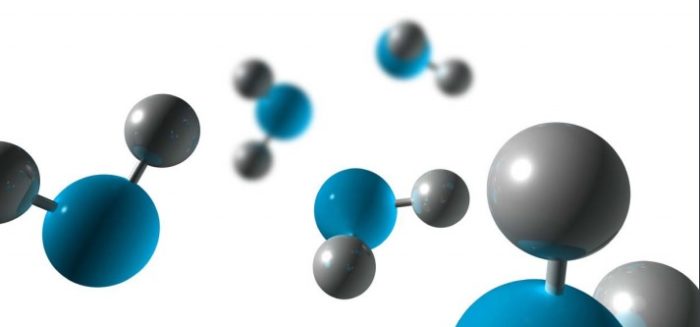Draft interim guidelines aimed at providing provide international standard provisions for ships using fuel cell power installations have been agreed by IMO’s Sub-Committee on Carriage of Cargoes and Containers (CCC 7).
The draft interim guidelines cover issues including fire systems and gas/vapour detection. The guidelines and are intended to ensure the safe and reliable delivery of electrical and/or thermal energy through the use of fuel cell technology.
The draft interim guidelines will be forwarded to the Maritime Safety Committee (MSC) for approval at its 105th session, scheduled to meet in April 2022.
Matters related to newer types of fuel are considered under the agenda item on the International Code of Safety for Ships using Gases or other Low-flashpoint Fuels (IGF Code).
Amendments to guidelines relating to low flashpoint fuels requiring low temperatures
The Sub-Committee agreed various draft amendments to guidelines and Codes in relation to ships using or carrying fuels such as liquefied natural gas (LNG), which is cooled to very low (cryogenic) temperatures for carriage. The draft amendments relate to the utilization of high manganese austenitic steel, including corrosion testing for ammonia compatibility.
The Sub-Committee agreed:
- Draft amendments to revise the guidelines for the acceptance of alternative metallic materials for cryogenic service in ships carrying liquefied gases in bulk and ships using gases or other low-flashpoint fuels;
- Draft amendments to IGF and the International Gas Carrier (IGC) Codes for incorporating high manganese austenitic steel into the Code as a suitable material;
- Draft amendments to interim guidelines on the application of high manganese austenitic steel for cryogenic service.
Austenitic steels, known to resist corrosion, are non-magnetic stainless steels that contain high levels of chromium and nickel and low levels of carbon.
Development of guidelines for the safety of ships using hydrogen as fuel initiated
The Sub-Committee considered a proposal to develop guidelines for the safety of ships using hydrogen as fuel.
With overwhelming support from the Member States and international organizations, the Sub-Committee agreed to initiate the development of guidelines for the safety of ships using hydrogen as fuel.
Updated work plan to address new low flash-point fuels agreed
The Sub-Committee agreed an updated work plan for the development of safety provisions for new low-flashpoint fuels under the IGF Code, for consideration by MSC 105 which is scheduled to meet in April 2022.
The work plan envisages, among other items:
- The development of guidelines for ships using hydrogen as fuel;
- The development of guidelines for ships using liquefied petroleum gas as fuel;
- The possible development of guidelines for ships using ammonia as fuel;
- The development of draft amendments to the IGF Code for ships using natural gas.
The work plan also envisages future discussions on the development of mandatory instruments regarding the use of methyl/ethyl alcohols as fuel and the development of mandatory instruments regarding fuel cells.
EXPLORE MORE ON THE GUIDELINES FOR METHYL/ETHYL AS FUEL
Draft amendments to the IMDG and IMSBC Codes agreed
The Sub-Committee agreed the next set of draft amendments to the International Maritime Dangerous Goods (IMDG) Code and the International Maritime Solid Bulk Cargoes Code (IMSBC Code), which will be submitted to MSC 105 for adoption, following finalization by the Editorial and Technical (E&T) Group.
The draft amendments to the IMDG Code include those required to take account of changes to the United Nations Recommendations on the Transport of Dangerous Goods which sets the basic requirements for all transport modes.
The matters related to safe transport of charcoal and reviewing on maritime special provisions will be continued intersessionally by a correspondence group established by the Sub-Committee.
The draft amendments to the IMSBC Code include
- The reclassification of ammonium nitrate-based fertilizer, including draft new individual schedules for Ammonium Nitrate Based Fertilizer MHB and Ammonium Nitrate Based Fertilizer. These follow consideration of following up the recommendations of the report of the incident of the bulk carrier Cheshire, which suffered a fire while carrying a cargo of ammonium nitrate in 2017;
- Addition of new definitions relating to the phenomenon of “dynamic separation”, which means the means the phenomenon of forming a liquid slurry (water and fine solids) above the solid material, resulting in a free surface effect which may significantly affect the ship’s stability. Cargoes which may undergo dynamic separation are cargoes which contain a certain proportion of fine particles and a certain amount of moisture and may undergo dynamic separation if shipped at a moisture content in excess of their transportable moisture limit. This follows research into dangers related to the carriage of bauxite.
- Addition of new individual schedule for Clam Shell. This cargo of whole calm shells is a by-product generated in the process of clam farming.
- Addition of new individual schedule for Leach Residue Containing Lead, which is an intermediate by-product formed as a result of the hydrometallurgical production of zinc and/or zinc-compounds.
Revised inspection programmes for cargo transport units agreed
The Sub-Committee agreed the revised Inspection programmes for cargo transport units carrying dangerous goods, in order to broaden the inspection programmes for CTUs.
The objective of the Guidelines is to assist in the implementation of a uniform and safe inspection programme for the inspection of CTUs) carrying goods for international transport by sea, and to provide guidance relating to such inspections in accordance with applicable IMO instruments.
Draft unified interpretations of the IGC Code agreed
Finally, the Sub-Committee agreed draft unified interpretations of the IGC Code, for submission to MSC 105 for approval.






























































